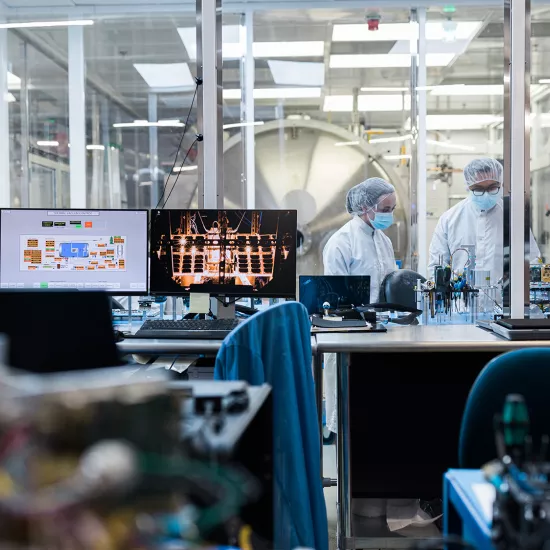UTM researcher tracking 1,000 years of sea ice change in hopes of predicting future conditions

Minoli Dias’s interest in sea ice began from what seems like an unlikely place: studying polar bear poop.
As an undergraduate student at Queen’s University, Dias was researching microplastics in polar bear feces and intestinal tracts as part of her thesis project.
“It was a smelly job, but it was really interesting,” she laughs.
While the work might have been unpleasant to the senses, it revealed some troubling facts. For instance, declining sea ice meant that species of polar bears were being driven inland — where garbage and landfill sites increasingly became their food sources.
She also learned from interactions with members of northern communities, particularly the Inuit, an Indigenous group that has called Labrador home for centuries. Community members noted in their own experiences, observations and research that declining sea ice levels has impacted access to essential needs — such as transportation, food security through hunting, and other culturally important activities.
Dias knew she wanted to pursue sea ice research and chose to study at UTM after speaking with Jochen Halfar, a paleoclimate and paleontology professor and researcher at UTM’s Climate Geology Research Group.
“UTM gave him a wonderful lab, and we have incredible facilities. But his research and his passion for the work was what really drew me,” she remembers.
Now as a PhD student in the department of Earth sciences at UTM, Dias is part of Halfar’s research group studying sea-ice cover changes along the Nunatsiavut Coast in northern Labrador. She and her co-researchers are developing sea-ice cover records for the past 1,000 years off the coast of Nunatsiavut and are examining coralline algae as part of their research.
Dias says that coralline algae live for approximately 1,500 years, and they grow in annual layers (like tree rings). The growth, she explains, is dependent on light. When the algae have more light, meaning there’s less sea ice in the water, they grow a lot thicker. When they have less light, meaning there’s more sea ice cover, these layers grow thinner. The research team can look at these variations and growth over time along with chemical tracers, and essentially track sea ice cover change.

Dias conducted field work in the community of Agvituk (Hopedale), Newfoundland and Labrador this past summer. The lab has also explored multiple sites including in Greenland, Norway, Nunavut and the Labrador coast.
“If we can create a network of these types of ocean reconstructions, we’ll be able to have this baseline data going back several centuries that can then hopefully inform model projections that are predicting what future conditions will look like,” she explains.
Since joining the lab, Dias says she has had some incredible experiences — including the recent opportunity to work with members of the Hopedale community who were always willing to lend the team a helping hand. But she says these Indigenous and northern communities, whose residents are personally impacted by declining sea ice, also hold important traditional and first-hand knowledge of changes over time.
“We’re not the experts. We don’t live there. It’s the people who live along the coast, and actually live the change and see the change, who are the experts,” she says. “When you speak to community members, they have a clear understanding of how changes occurred over time, and what is the importance of sea ice to these ecosystems.”
Once she completes her PhD, Dias hopes to continue pursuing climate research, whether it’s working directly with communities that are impacted, or working to address the impacts of pollution or climate change.
As she continues her scientific work — which she says is still a fairly male-dominated space — Dias says she feels inspired by the many women scientists who came before her, including her female professors who have served as role models.
“They paved the way for us to be able to do the work that we do, and to do it in relative comfort,” she says. “Having these women to look up to is what makes it possible for me to do the type of work that I do, and I hope I can make a similar contribution and pay it forward to the women that are coming after me.”



